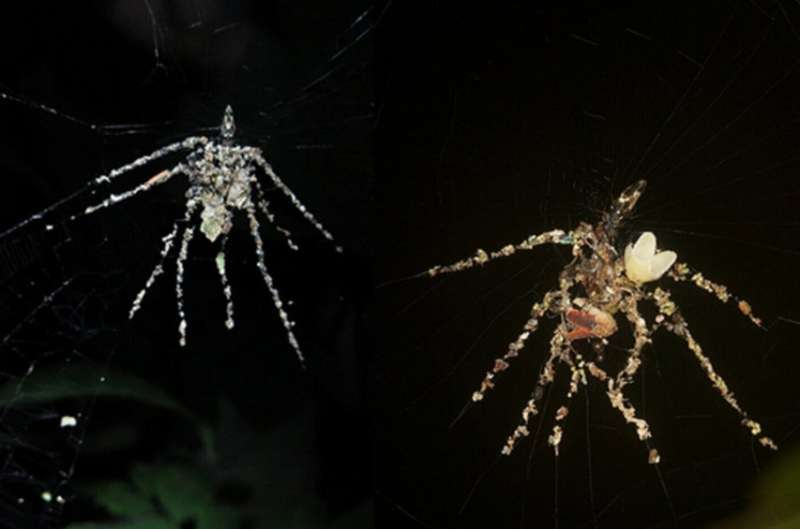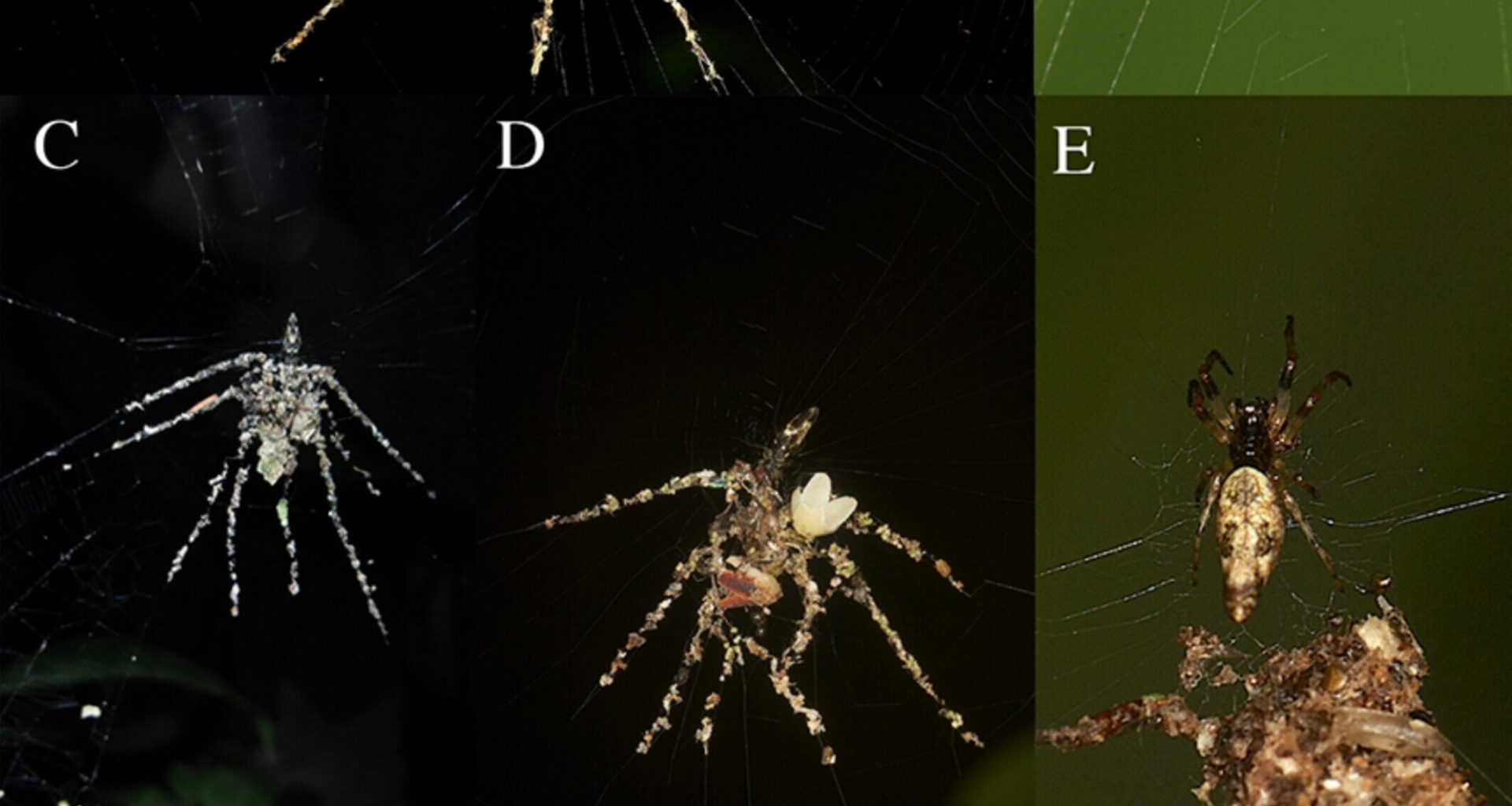
Spider-like decoys observed by the researchers. Credit: Ecology and Evolution (2025). DOI: 10.1002/ece3.72371
The extraordinary anti-predator strategy of two tiny, orb-weaving spider species has been uncovered by scientists from The Australian National University (ANU) and the University of Florida.
Several of the paper’s co-authors first reported on the possible discovery of a new species of spider more than a decade ago, following a chance encounter in the Amazon rainforest in Peru. Now, the unusual behavior of the Peruvian species and a second orb-weaving species from the Philippines has been scientifically recorded for the first time.
According to lead author of the current study published in Ecology and Evolution, Dr. George Olah from ANU, the tiny, vulnerable spiders turn their web into a “theater of deception” to trick would-be attackers.

Two species of spiders have been observed building elaborate structures to trick would-be attackers. Credit: Dr. George Olah
“They don’t just decorate their webs—they meticulously arrange detritus, prey carcasses and silk into a structure that’s not only larger than their own body, but clearly resembles the silhouette of a bigger, menacing spider,” Dr. Olah said.
Researchers believe the “decoy spider” serves a dual purpose. It may mimic a larger predator that birds, lizards, and other enemies would prefer to avoid, while also creating a diversion, drawing an attack away from the smaller, real spider.
“This behavior is not just a quirky biological observation; it illustrates a fundamental evolutionary trade-off in the spider world,” co-author Dr. Lawrence Reeves from the University of Florida said. “Unlike many orb-weavers that build a physical retreat to hide, these Cyclosa species appear to invest their time and resources into building an expendable visual defense instead.”
The remarkable behavior of the spiders was recently captured on film by the study’s co-authors and features in a multi-Emmy Award-winning documentary series, “The Secret Lives of Animals.”
“It might be the case that particularly strong selection within both these groups has resulted in them developing an increasingly complex visual defense,” Dr. Olah said. “Future studies could help shed further light on this—for example, comparing the survival rates of spiders with and without the “decoy spider.””
More information:
George Olah et al, Cyclosa Menge, 1866 (Araneidae) Orb‐Weavers Build Stabilimenta That Resemble Larger Spiders, Ecology and Evolution (2025). DOI: 10.1002/ece3.72371
Provided by
Australian National University
Citation:
Tropical spiders craft giant doppelgängers as decoys (2025, November 10)
retrieved 10 November 2025
from https://phys.org/news/2025-11-tropical-spiders-craft-giant-doppelgngers.html
This document is subject to copyright. Apart from any fair dealing for the purpose of private study or research, no
part may be reproduced without the written permission. The content is provided for information purposes only.

